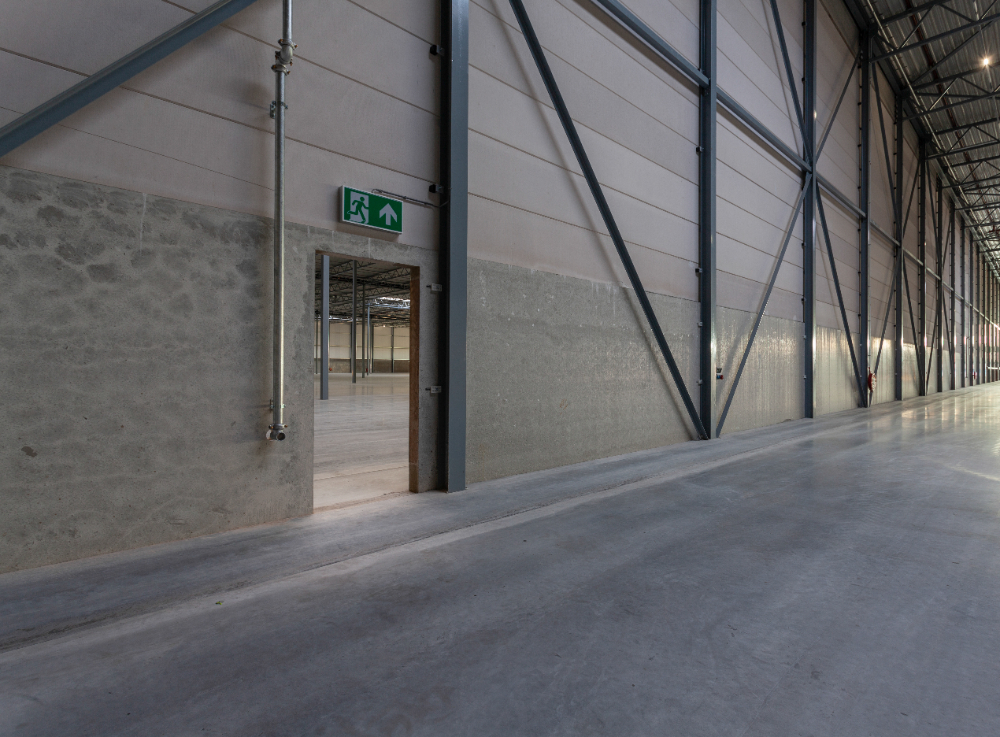Do metals sweat?
While metal garages are virtually invulnerable to pests like termites and rats, these structures are still susceptible to excessive moisture. Metals are not immune to environmental challenges, particularly moisture issues.
Moisture can weaken almost any buildings. Damp insulation cannot totally regulate temperatures in a metal building. It might even promote mildew growth which is unpleasant to the senses.
As for wet insulation, once it gets in contact with metal surfaces, corrosion may happen.
Excess moisture in a metal garage can lead to rust, structural damage, mold, and compromised stored items. Effective moisture control is essential to preserving the longevity of the building and ensuring the safety of its contents.
This article from the experts explores the causes of moisture problems in metal garages and provides practical solutions to manage and prevent them.
What are the Causes of Moisture in Metal Garages
Condensation
Condensation occurs when warm, moist air inside the garage comes into contact with cooler metal surfaces, such as walls or the roof. This process often happens in climates with significant temperature fluctuations or high humidity levels. The condensed moisture then collects on surfaces, potentially leading to rust and water damage.
Leaking or Improper Sealing
Gaps, cracks, or poorly installed panels can allow water to seep into the garage, particularly during heavy rain or snowfall. Improper sealing at the foundation level is another common issue, allowing groundwater or rainwater to enter.
Ground Moisture
Moisture from the ground can infiltrate a metal garage, especially if the foundation is not properly sealed. This issue is exacerbated in areas with poor drainage or high water tables.
Consequences of Excess Moisture
Uncontrolled moisture in a metal garage can result in various problems, including:
Rust and Corrosion
Metal structures, while durable, are inherently susceptible to rust when exposed to moisture and oxygen. This natural process, known as oxidation, can compromise the structural integrity of a metal garage over time, leading to weakened frameworks and potentially costly repairs. Areas most vulnerable include joints, fasteners, and any surfaces where water tends to accumulate or where protective coatings may have worn off. Without proper maintenance, rust can spread, further deteriorating the metal and reducing the overall lifespan of the structure. Proactive measures are essential to prevent rust from taking hold and ensure the longevity of your metal garage.
Mold and Mildew
Excess moisture inside a metal garage can create the perfect breeding ground for mold and mildew, fungi that thrive in damp, humid environments. These unwelcome intruders can spread quickly, affecting walls, ceilings, and any stored items, especially those made of fabric, wood, or paper. The presence of mold and mildew not only damages your belongings but can also compromise air quality, leading to potential health risks such as respiratory issues, allergies, and skin irritations for those who frequently use the space.
Structural Damage
Prolonged moisture exposure can severely weaken the structural integrity of a metal garage over time. Water can infiltrate seams, joints, and fasteners, leading to rust and corrosion that compromise the strength and stability of the metal components. In extreme cases, prolonged rusting may result in holes or fractures, making the structure unsafe. Additionally, moisture can seep into the foundation, causing cracks or shifting that further destabilize the building. Insulation and other materials within the garage may also degrade due to persistent dampness, amplifying the damage. Repairing such issues often requires significant time and expense, underscoring the importance of proactive moisture control to prevent structural deterioration and maintain the longevity of the garage.
Damage to Stored Items
Excess moisture in a metal garage can wreak havoc on the items stored within, causing both functional and aesthetic damage. Vehicles are particularly susceptible to rust and corrosion on their metal surfaces, frames, and mechanical components, which can lead to costly repairs or reduced lifespan. Tools, especially those made of metal, are also at risk of rusting, rendering them ineffective or unsafe for use. Moisture can damage wood, fabric, and paper-based items by fostering mold and mildew growth, which not only deteriorates the materials but also creates unpleasant odors and potential health hazards. Electronics stored in the garage may experience short circuits or irreparable damage due to exposure to damp conditions. Preventing moisture buildup is essential to preserving the condition and value of your belongings, ensuring they remain in good working order for years to come.
Preventing Moisture Problems
Proper Site Selection and Preparation
The first step to effective moisture control begins before the garage is even built. Choose a location with good drainage to prevent water from pooling around the structure. Elevated sites are preferable, as they naturally direct water away from the building.
When preparing the site, ensure the ground is level and compacted. A gravel base can further improve drainage by reducing direct contact between the foundation and ground moisture.
Install a Vapor Barrier
A vapor barrier is a critical component in preventing ground moisture from seeping into the garage. Typically installed beneath the foundation or flooring, vapor barriers block moisture from rising through the ground. Use a heavy-duty polyethylene sheet or a similar material designed for this purpose.
Insulating and Ventilating the Garage
Use Insulation
Insulating a metal garage is one of the most effective ways to reduce condensation. Insulation creates a thermal barrier that prevents warm indoor air from contacting cool metal surfaces. Several insulation types are suitable for metal garages, including spray foam, fiberglass batts, and rigid foam boards.
- Spray Foam: Offers excellent thermal resistance and creates an airtight seal, reducing condensation risks.
- Fiberglass Batts: A cost-effective option, though it may require a vapor barrier for optimal performance.
- Rigid Foam Boards: Durable and resistant to moisture, making them a great choice for metal structures.
Improve Ventilation
Proper ventilation reduces humidity levels inside the garage, minimizing the likelihood of condensation. Install roof vents, ridge vents, or wall vents to ensure a consistent airflow. Exhaust fans can also help expel moist air, particularly in garages that house vehicles or equipment that generate humidity.
Sealing and Weatherproofing
Seal Joints and Gaps
Inspect the seams, joints, and corners of the garage for gaps or cracks. Use high-quality silicone or polyurethane sealants to create a watertight barrier. Pay special attention to areas where the walls meet the roof and foundation.
Install Weatherstripping
Apply weatherstripping around doors and windows to prevent moisture ingress. Choose materials that can withstand temperature fluctuations and maintain a tight seal over time.
Waterproof the Foundation
A concrete foundation should be properly sealed to prevent water infiltration. Use waterproof sealants or coatings specifically designed for concrete surfaces. Reapply these products periodically to maintain effectiveness.
Controlling Humidity Inside the Garage
Dehumidifiers
A dehumidifier is an excellent tool for controlling indoor humidity levels. Choose a model with the capacity to handle the size of your garage. Portable units are suitable for smaller garages, while larger spaces may require industrial-grade dehumidifiers.
Monitor Humidity Levels
Invest in a hygrometer to monitor indoor humidity levels. Ideally, the relative humidity inside the garage should be kept between 30% and 50%.
Maintenance Practices for Long-Term Moisture Control
Regular Inspections
Conduct routine inspections of the garage to identify and address moisture issues promptly. Look for signs of rust, water stains, or mold growth. Inspect seals, weatherstripping, and ventilation systems for wear and tear.
Clean and Maintain Gutters and Downspouts
Ensure that gutters and downspouts are free of debris and functioning properly to direct water away from the structure. Extend downspouts at least five feet from the foundation to prevent water from pooling around the base.
Repair Damaged Panels Promptly
If a panel becomes dented or damaged, repair or replace it as soon as possible. Damaged panels can compromise the structure’s ability to resist moisture infiltration.
Conclusion
Moisture control is a vital aspect of maintaining a metal garage. By taking proactive steps to prevent and address moisture issues, you can protect your investment, preserve the structure’s integrity, and safeguard stored items. From proper site preparation and insulation to routine maintenance and humidity control, these strategies ensure your metal garage remains functional and durable for years to come.
Whether you use your garage for vehicle storage, a workshop, or additional storage space, addressing moisture concerns enhances its utility and longevity. By incorporating these best practices, you can enjoy a dry, rust-free, and secure environment in your metal garage.

